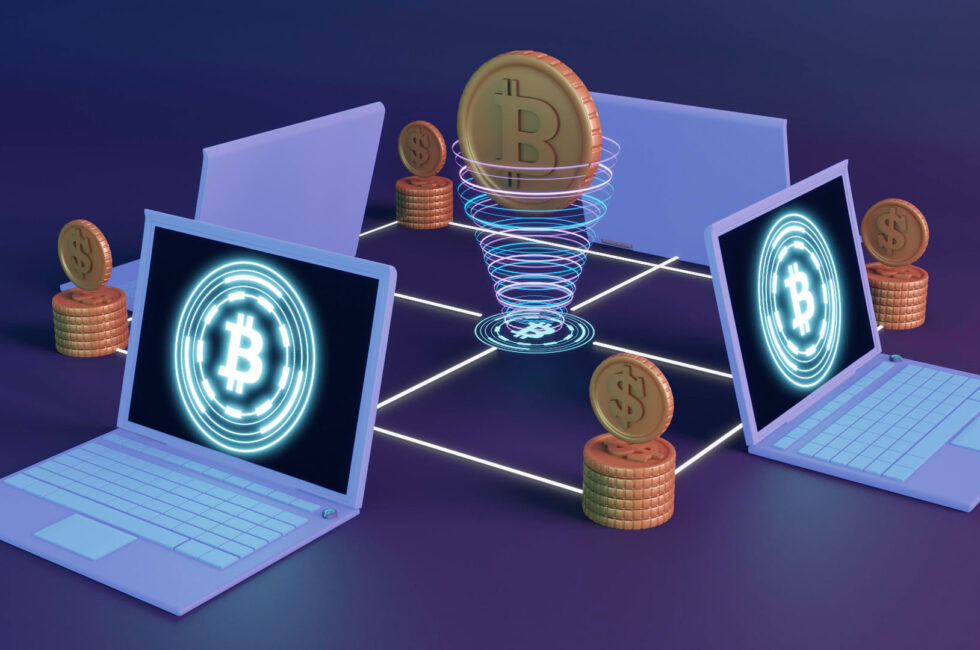In the realm of cryptocurrencies, Bitcoin reigns supreme, not just as a digital asset, but as a groundbreaking technological achievement. At the heart of Bitcoin’s operation lies the intricate process of mining, which powers the entire network and facilitates the creation of new Bitcoins. If you’re new to the world of cryptocurrencies, this guide is your gateway to understanding what Bitcoin mining is and how it works.
What is Bitcoin Mining?
Bitcoin mining is the backbone of the Bitcoin network, ensuring its security, integrity, and functionality. Unlike traditional mining, which involves extracting precious metals from the ground, Bitcoin mining is a digital process that involves verifying and recording transactions on the blockchain.
How Does Bitcoin Mining Work?
Imagine the blockchain as a public ledger where all Bitcoin transactions are recorded. To maintain its accuracy and security, new transactions need to be validated and added to this ledger. This is where miners come into play. Miners are individuals or groups of individuals who use powerful computers to solve complex mathematical puzzles.
These puzzles are designed to be computationally intensive and require substantial processing power to solve. Miners compete to find the solution to these puzzles, and the first one to do so gets the opportunity to add a new block of transactions to the blockchain. As a reward for their efforts, the successful miner receives a fixed number of newly minted Bitcoins and any transaction fees associated with the transactions they’ve included in the block.
Proof of Work: The Driving Force Behind Mining
The process of solving these mathematical puzzles is known as “Proof of Work” (PoW). It serves as a mechanism to deter malicious actors from altering the blockchain’s history. Because solving these puzzles demands significant computational effort, attempting to alter the blockchain’s past transactions becomes incredibly difficult and economically unfeasible. This robust security ensures the integrity of the Bitcoin network.
Mining Hardware: The Tools of the Trade
Mining is not a task that can be done with just any computer. Specialized hardware is required to handle the immense computational demands of solving PoW puzzles. Two primary types of hardware used in Bitcoin mining are Application-Specific Integrated Circuits (ASICs) and Graphics Processing Units (GPUs). ASICs are purpose-built devices solely for mining, while GPUs, commonly used in gaming computers, can also be repurposed for mining.
Mining Pools: Joining Forces for Success
As Bitcoin’s popularity has grown, the difficulty of the mathematical puzzles has increased as well. This has led to a phenomenon known as mining centralization, where individual miners find it increasingly difficult to compete. To counter this, miners often join mining pools, where they combine their computing power to increase their chances of successfully mining a block. If the pool mines a block, the rewards are distributed among participants based on their contributed computational power.
Energy Consumption and Sustainability
Bitcoin mining’s energy consumption has been a subject of debate. The energy-intensive nature of PoW puzzles has led to concerns about its environmental impact. While it’s true that mining requires a significant amount of electricity, it’s essential to note that the industry is actively seeking ways to transition to more sustainable energy sources and reduce its carbon footprint.
Conclusion: The Foundation of Digital Gold
Bitcoin mining is the backbone of the entire Bitcoin network. It’s a process that validates transactions, secures the blockchain, and introduces new Bitcoins into circulation. Understanding the mechanics of mining provides you with insights into the decentralized nature of cryptocurrencies and the innovative technology that powers them. As you dive deeper into the world of Bitcoin, remember that mining isn’t just about digital coins; it’s about maintaining trust, security, and the decentralized ideals that underpin this revolutionary financial ecosystem.

